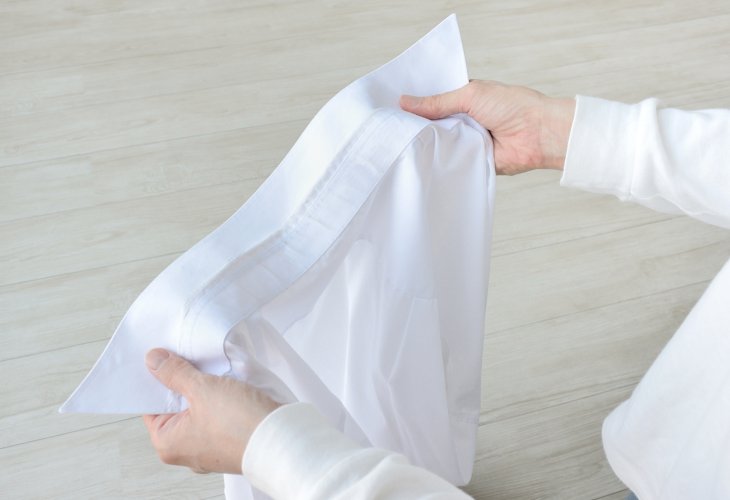The Ultimate Guide to Removing Stains from Tallit and White Fabrics
Need a reliable tip for removing stubborn stains from white fabrics, especially a tallit? Here’s your comprehensive guide based on the type of stain.
 Image credit: shutterstock
Image credit: shutterstockRemoving black stains from white fabrics can be a bit tricky since the black color can be persistent and sometimes hard to completely eliminate. However, with the right approach and a bit of patience, they might be removed using one or more of the following methods:
1. Pre-Treat the Stain
Start by pre-treating the stain as soon as possible. Gently blot any excess dirt or visible grime with a clean cloth or paper towel. Avoid rubbing, as this can push the stain deeper into the fabric.
2. Apply a Stain Remover
Use a stain remover specifically made for tough stains. Follow the instructions on the product and apply it directly to the stained area. You can spray the stain remover or use a clean cloth or sponge to gently dab it into the fabric.
3. Soak in Solution
If the stain persists, try soaking the fabric in a solution. Mix equal parts of water and hydrogen peroxide in a tub and dip the stained area of the garment in the solution. Soak the garment for about 15-30 minutes. Since hydrogen peroxide can act like bleach, test it on a small, inconspicuous area first to check for any adverse reactions.
4. Wash as Usual
After pre-treatment and soaking, wash the garment using a good-quality laundry detergent. Use only the recommended water temperature for the fabric. Check the stain after washing, and if it’s still visible, avoid drying the garment, as heat can set the stain. Instead, repeat the pre-treatment and soaking steps before washing again.
5. Seek Professional Help
If the black stain remains even after trying these methods, it might be best to seek professional dry cleaning help. They have the expertise and special cleaning techniques to effectively remove stubborn stains. Remember, it’s essential to act quickly when treating stains and to test any cleaners or solutions on a small, hidden area of the fabric before applying them to the entire stain. Also, always follow the care instructions provided by the garment manufacturer to ensure you don’t damage the fabric.
Removing ink and wine stains from white clothing can be a bit challenging, but it’s possible with the right approach. Here’s how you can tackle these stains:
For Ink Stains:
1. Avoid rubbing the stain to prevent it from spreading further into the fabric.
2. Test Cleaner: Before applying any cleaner, test it on a small, inconspicuous area of the garment to ensure it doesn’t cause discoloration. If it’s safe, proceed to the next step.
3. Apply Alcohol: Dampen a clean cloth or cotton ball with alcohol (like rubbing alcohol) and gently dab the ink stain. Start from the outside and work your way inwards to prevent the ink from spreading. Continue blotting until the ink begins to fade.
You can also try another trick to remove the ink stain (which personally worked like magic for me) - rubbing with a wipe soaked in milk.
4. Rinse and Wash: Once the stain has lightened, rinse the area with cold water to remove any alcohol residue. Wash the garment according to care instructions, using regular laundry detergent.
For Wine Stains:
1. Blot the Stain: Similar to ink stains, start by blotting the wine stain with a clean cloth or paper towel to absorb as much wine as possible. Again, avoid rubbing, as it can worsen the stain.
2. Pre-Treat the Stain: Depending on the fabric, different pre-treatment options are available. For white cotton or polyester, you can create a paste by mixing equal parts baking soda and water. Apply the paste to the stain and let it sit for 15-30 minutes. For delicate fabrics, you can use a stain remover or white vinegar instead.
3. Rinse and Wash: After pre-treating, rinse the area with cold water to remove the paste or stain remover. Then, wash the garment as usual using a good-quality laundry detergent and the water temperature recommended for the fabric. If the stains persist after these steps, you may need to repeat the process or consider seeking professional help. Remember, it's always important to check the care instructions on the garment and test any cleaner on a small, hidden area before full application.

